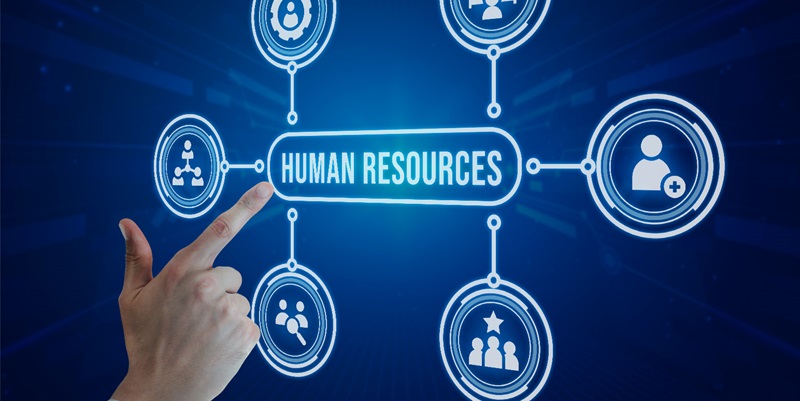The Human Resources field is currently evolving, integrating tech like AI and automation to streamline its processes. This technological shift promises increased efficiency, but it simultaneously raises an essential question for HR professionals. How can they balance these new tools without sacrificing the human element that’s crucial to their work? The challenge is to marry these tech advancements with the personal touch that defines HR, ensuring that technology augments rather than replaces the human connection. It’s about finding harmony between data-driven machines and the intrinsic human-centric nature of HR, guaranteeing that technology serves as an ally to enhance human interactions, not diminish them. As HR forges into this tech-savvy era, the focus must firmly remain on keeping the ‘human’ in Human Resources, even as they navigate and leverage the power of these new digital tools.
Embracing Change with a Human-Centric Approach
To strike a balance between technology and humanity, HR must reconceptualize the recruitment process with a human-centric mindset. This involves ensuring that while AI may filter applications, the final selection and interviews are laced with human discernment and connection. Video interviews, for instance, are rapidly replacing in-person ones, but they still allow for the empathy and warmth of face-to-face interactions. Moreover, personalized communication, such as bespoke emails or calls, affirms to candidates that behind the screen, there is an individual genuinely considering their aspirations and fit within the company. It’s the reflection of an organizational ethos that values people as much as it does productivity.
Incorporating personal touches such as virtual coffee chats or employee testimonials gives candidates a unique lens into the company culture, directly from those who experience it day-to-day. These strategies not only foster engagement but also project an image of the organization equipped for the future yet firmly grounded in the importance of human connection. As HR navigates this new terrain, it becomes crucial to not let efficiency eclipse the essence of the recruitment interaction, ensuring candidates feel they are more than just a number in a system.
The Role of Augmented Empathy in HR
As HR integrates tech to scrutinize sentiments and engagement, the mastery of human emotions persists through human empathy. Augmented empathy enables HR to tap technology for a clearer understanding of employee sentiments, while their innate empathy fosters genuine connections. Nuanced interactions and workplace narratives, which a machine can’t fully comprehend, require a human touch.
Tech like AI can reveal issues such as stress patterns within a workforce, but HR’s role is pivotal in interpreting this data with humanity. It’s the empathetic approach of HR professionals that allows them to translate impersonal analytics into meaningful, trust-building actions. They craft personalized solutions to enhance morale and weave a tighter community at work, showcasing the necessity of blending tech with the irreplaceable human element.
Cultivating Culture in the Digital Era
HR professionals bear the mantle of culture architects, individuals entrusted to weave the intangible tapestry of a company’s culture. Technology, for all its utility in measuring and tracking cultural metrics, lacks the capacity to kindle the human spirit that animates an organization’s values and beliefs. The vital task of HR is to imbibe these metrics with meaning—translating them into initiatives, conversations, and traditions that resonate with every employee, thereby fostering a shared sense of purpose and pride.
A thriving organizational culture is not an algorithmic output but a human experience shaped by deliberate actions and interactions. It’s about creating a space where individuals can connect, share ideas, and feel a sense of belonging. HR’s role is to use technology to inform their strategies but to use their humanity to implement them—ensuring that, as the company grows, the heart of its culture beats as strongly as ever.
Data Visualization and Transparency
In the digital era, HR professionals are inundated with data. Their challenge is to transform this deluge of information into coherent, understandable insights that empower employees at all levels. By leveraging data visualization tools, HR can present complex analytics in a manner that’s not only digestible but also actionable. Transparency becomes equally crucial, as it is the gateway to trust and collective ownership of the company’s vision and objectives.
Clear, visually engaging data presentations allow for a shared language around business goals and employee performance—demystifying the numbers and fostering an inclusive environment where everyone is equipped to contribute to the organization’s success. Simplifying metrics to tell a compelling story sets the stage for a more engaged and interconnected workforce, one where data serves the people, rather than the other way around.
HR 2.0: The Future of Human Resources
The HR revolution is on the horizon, signaling a blend of technology with human insight for powerful, people-oriented workplaces. HR 2.0 will infuse AI and analytics into the human elements of creativity and empathy, striking a balance between tech efficiency and the nurturing of a vibrant work culture. For HR professionals, the true skill will lie in harnessing technology to enhance—never replace—the human connection.
In this new era, AI and automation are tools that augment human abilities rather than supplant them, ensuring that the personal touch remains paramount in the workplace. This symbiotic relationship between human and machine in HR functions will allow a deeper focus on cultivating a fulfilling work environment. As we move forward, despite technological strides, the essence of HR remains steadfast: to keep the human experience at the core of the workplace.

